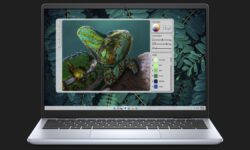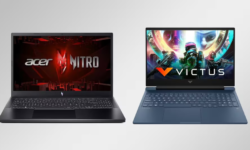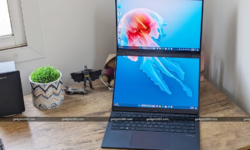Apple CarPlay: everything you need to know
Apple’s iPhone-compatible in-dash experience
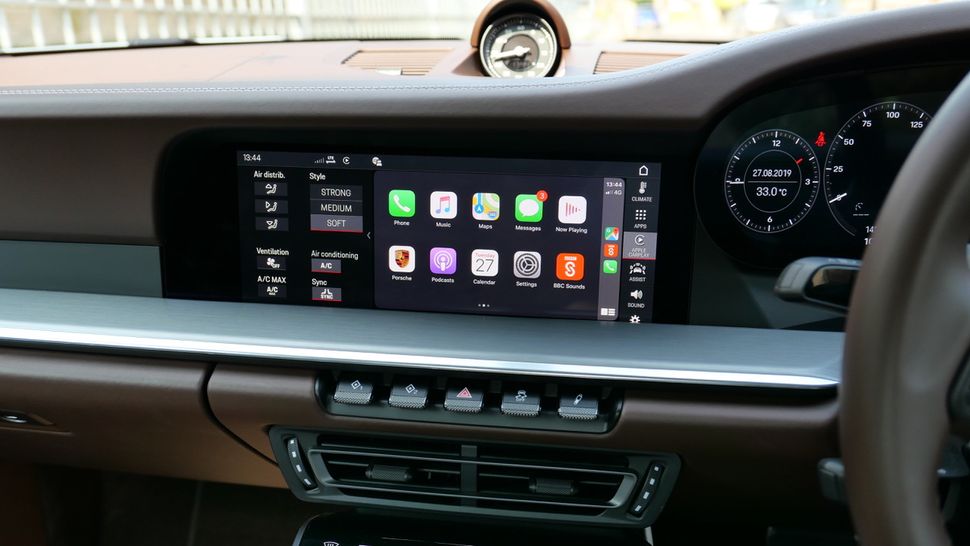
In just a few short years, Apple has taken CarPlay from a rarely-seen optional extra with limited uses, to a must-have for any new car buyer. At its simplest, CarPlay takes the user interface and apps of your iPhone, and puts them on the dashboard display of your car.
Completely replacing your car’s own infotainment system (thats information and entertainment, btw), CarPlay brings with it some of the apps you are used to using, like maps (Apple, Google or Waze), music (Apple, Spotify and others), Messages, WhatsApp, Phone, Podcasts and more.
For its most recent upgrade with iOS 13, Apple has taken things even further. Now, car manufacturers are invited to put a CarPlay interface on more than one display. As cars start to feature multiple screens, this makes a lot of sense as it means CarPlay can appear on the central display and on digital instrument clusters behind the steering wheel.
There’s a lot to like about CarPlay, but it isn’t quite perfect just yet. Some manufacturers have started charging subscription fees for the service (which seems a bit mean, given the software is running on your phone, not the car), and not all apps are available. Read out to learn more about exactly what Apple CarPlay is, how it works, and how you can get it for yourself.
What is CarPlay?
In simple terms, CarPlay takes the user interface of your iPhone and puts it onto the infotainment screen of your car dashboard.
This means when your iPhone is plugged in, the car’s own system is replaced by the iOS home screen, complete with app icons and a virtual home button. New with iOS 13 is a new home screen, which sits to the left of the usual app launcher. Swipe over to this new screen, and you can see the map and media playback controls at the same time, plus a couple of app icons and other shortcuts. Exactly what’s shown on this screen depends on how you are using CarPlay, and the size of your car’s display.
CarPlay is interacted with via whatever controls your car already has, whether that be a touch screen, buttons, knobs, voice or a combination of all of these.
CarPlay doesn’t include every app on your smartphone, because playing Fortnight on your car dashboard is clearly a disaster waiting to happen, and some elements of apps are replaced by voice and dictation.
For example, incoming iMessages and WhatsApp messages are read out to you by Siri instead of being shown on the display.
Most cars require you to plug your iPhone into the USB port with a Lightning cable, but some newer models now support wireless CarPlay, which works via the car’s Bluetooth connection.
This is more convenient, but you’ll want to make sure your iPhone is sat on a wireless charger if using wireless CarPlay, as it can drain the battery quickly if you’re streaming music over 4G and using the Maps app for navigation. Thankfully, wireless charging is also becoming more common in pricier vehicles.
CarPlay is designed to remove the urge to take a quick look at your iPhone behind the wheel. It’s safer, easier and more convenient – or that’s the idea, anyway.
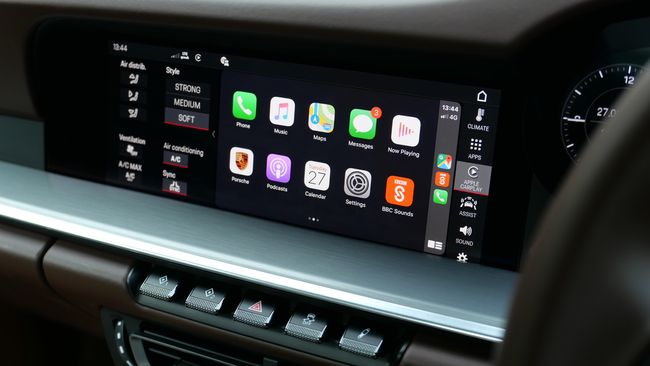
Which cars support Apple CarPlay?
As of October 2019, there are over 500 models of car with CarPlay available either standard or as a paid-for optional extra.
Some cars bundle CarPlay when you opt for the enhanced sound system, for example, or pick a higher level of cabin trim level.
Other manufacturers charge a premium for adding CarPlay on its own, and the price can vary significantly.
For example, Honda includes CarPlay as standard on some models, Mercedes charges £267 (about $330, AU$480), and Ford includes CarPlay with its circa £550 (about $680 / AU$1,000) Sync 3 system in the new Fiesta – along with a larger touch screen and the company’s own navigation system.
At the other end of the scale, Ferrari charges a huge £2,400 (about $2,900 / AU$4,400) for adding the software necessary to make it work.
Some manufacturers, like Mazda, allow for CarPlay to be retrofitted to some second-hand cars. For example, the company charges £350 (about $450, AU$650) to fit CarPlay to its current ND-generation MX-5. Alternatively, drivers handy with a screwdriver can buy the parts and fit it themselves for half that.
Finally on the topic of cost, some manufacturers like BMW are starting to charge an annual subscription for CarPlay after the first 12 months. BMW charges $80 / £85 / AU$179 per year, or new buyers can pay $300 / £295 (about AU$450) for a 20-year subscription which stays attached to the car.
We’ve included a list of manufacturers currently offering CarPlay at the end of this article. Although it doesn’t include everyone just yet, you’ll be doing well to name a car maker off the top of your head that doesn’t offer CarPlay – apart from Tesla, of course.
Apple CarPlay aftermarket solutions?
If you’re not in the market for a new car, you can still get some CarPlay in your life by installing an aftermarket stereo.
Manufacturers like Alpine, Clarion, JBL, JVC, Kenwood, Pioneer and Sony all sell car stereo systems with CarPlay, as well as other goodies like Android Auto, Bluetooth and DAB digital radio.
Prices start at around £200 (about $280 / AU$360) for an entry-level unit from a company like Power Acoustik, and go beyond £500 (about $700 / AU$900) for a fold-out system from Pioneer.
Advertisement
What you need to know about these systems is that car stereos come in two sizes; single DIN and double DIN. Single DIN units are usually two inches tall, while double DIN means a system which is four inches tall.
The former, like the Pioneer AVH-Z7000DAB we referred to above, is a single DIN unit with a motorised screen which folds out of your dashboard. Modern cars with their curved dashboards tend to not cater for aftermarket stereos like these without modification to the dashboard – something that’s generally not advisable on most modern vehicles. In short, the older the car, the more likely you can retro-fit CarPlay with a third-party stereo.
Is my iPhone compatible with CarPlay?
If you’re still rocking an old iPhone with a 30-pin connector, then you’re out of luck; any model before the iPhone 5 does not work with CarPlay. No model of iPad or iPod Touch works with CarPlay.
But this also means a lot of iPhones do – and here they are:
iPhone 5
iPhone 5S
iPhone 5C
iPhone SE
iPhone 6
iPhone 6 Plus
iPhone 6S
iPhone 6S Plus
iPhone 7
iPhone 7 Plus
iPhone 8
iPhone 8 Plus
iPhone X
iPhone XS
iPhone XS Max
iPhone XR
iPhone 11
iPhone 11 Pro
iPhone 11 Pro MaxWhat does CarPlay look like?
CarPlay is designed to look a lot like iOS. Sure, the home screen background is made black and most of your apps are hidden from view, but CarPlay is still the bare bones of your iPhone.
The main screen shows a selection of apps like Phone, Music, Maps and Messages, along with the time, your phone’s signal strength, and a virtual home button.
New for iOS 13, a second home screen sits to the left. This shows a map, plus a couple of shortcuts, media controls, and the icons of your most recently used apps. It’s a more useful and functional home screen than the app launcher page, but there are some limitations.
For example, the map widget on this age only shows navigation instructions if you’re using Apple Maps for directions. Use Google Maps and you’ll still hear the instructions, but nothing happens on the home screen. Instead, you’ll have to open Google Maps full-screen and stick with it.
Thankfully, third-party audio apps like Spotify and Audible do appear on the new dashboard screen. The layout of this new home screen depends on the size of your car’s main display.
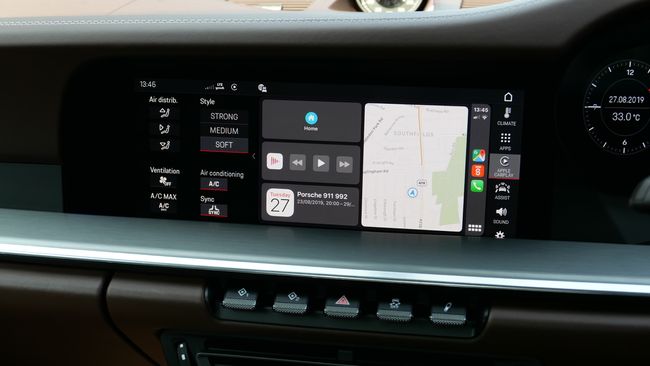
The main screen shows a selection of apps like Phone, Music, Maps and Messages, along with the time, your phone’s signal strength, and a virtual home button.
New for iOS 13, a second home screen sits to the left. This shows a map, plus a couple of shortcuts, media controls, and the icons of your most recently used apps. It’s a more useful and functional home screen than the app launcher page, but there are some limitations.
For example, the map widget on this age only shows navigation instructions if you’re using Apple Maps for directions. Use Google Maps and you’ll still hear the instructions, but nothing happens on the home screen. Instead, you’ll have to open Google Maps full-screen and stick with it.
Thankfully, third-party audio apps like Spotify and Audible do appear on the new dashboard screen. The layout of this new home screen depends on the size of your car’s main display.
WhatsApp
Spotify
BBC Sounds
Amazon Music
Google Play Music
iPlayer Radio
CBS Radio
Pandora
Slacker Radio
Tidal
Audible
NPR One
VOX
Clammr
Downcast
Google Maps
Waze
Here CarPlay used to be quite limited with regard to which third-party apps you could use, but as you can see from the list above, that situation has changed. Now you can use Google Maps, Spotify, BBC Sounds and WhatsApp instead of Apple’s equivalents.
Default iPhone apps on CarPlay:
Phone
Calendar
Music
Maps
Messages
Now Playing
Podcasts
AudiobooksHow do you control Apple CarPlay?
The beauty of CarPlay it how it can be controlled by whatever interface your car has. Generally speaking, this means there are three options.
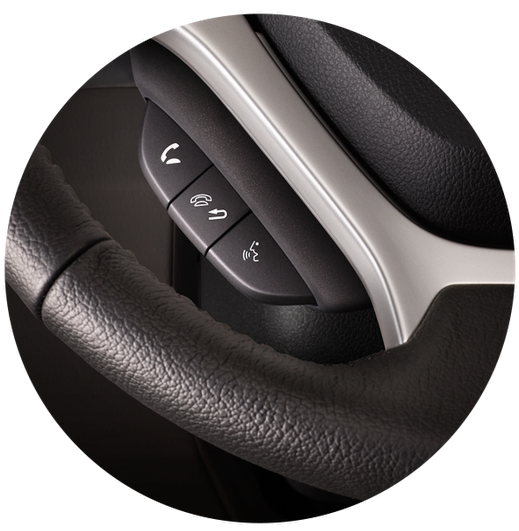
1) Use Siri
Using Siri, you can talk to your vehicle and tell it what to do. That includes playing music from your favorite band or even requesting a specific playlist. You can also have your messages read out to you before you dictate a reply.
You can also yell ‘Hey, Siri’ at your phone to activate its virtual assistant. However, this might not work so well if your iPhone is stored away somewhere in the cabin, like the glovebox. Instead, you can press your car’s voice control button on the steering wheel.

2) Use the touchscreen
Almost all CarPlay-compatible cars come with touchscreen displays cooked into the dashboard. Using this display, you can open and close apps using CarPlay’s simple home screen.
This is certainly the most straightforward method of using CarPlay, but interacting with a touch screen can take your attention off the road more than using physical controls, depending on the size and exact location of the display.

3) Use your knobs
Of course, your car has physical buttons, knobs and controls, and you’re still able to use these alongside the touchscreen and Siri options.
Volume controls, track skip buttons and control knobs are all seamlessly integrated and work as expected – and so too do those on the steering wheel.

What about digital gauge clusters and head up displays?
Although none have just yet (as of October 2019), with iOS 13 car manufacturers are now able to put CarPlay on multiple screens at once if they so choose.
This means elements of the interface can be shown on the digital instrument cluster behind the car’s steering wheel, along with the main iPhone-style interface on the dashboard touchscreen. In an ideal world, this could mean navigation instructions appears on the instrument cluster, while music playback and a larger map view appear on the dashboard display.
What’s even more exciting is how CarPlay will look on vehicles with multiple dashboard displays. We’re keen to see how this will look on upcoming multi-screened cars like the Honda e and Porsche Taycan.
Here is a list of car manufacturers which offer Apple CarPlay (correct as of October 2019). As we mentioned earlier, some cars need specific trim levels or option packages to receive the feature.
Abarth
Acura
Alfa Romeo
Aston Martin
Audi
Bentley
BMW
Borgward
Buick
Cadillac
Chery
Chevrolet
Chrysler
Citroen
Cowin Auto
Datsun
Dodge
DS
Ferrari
Fiat
Ford
Genesis
GMC
Ha/Ma
Haval
Honda
Hyundai
Jaguar
Jeep
Kia
Lamborghini
Land Rover
Lexus
Lifan
Lincoln
Maserati
Mazda
Mercedes-Benz
Mini
Mitsubishi
MG
Nissan
Opel
Peugeot
Porsche
Ram
Renault
Seat
Skoda
Subaru
Suzuki
Tata
Toyota
Vauxhall
Volkswagen
Volvo

